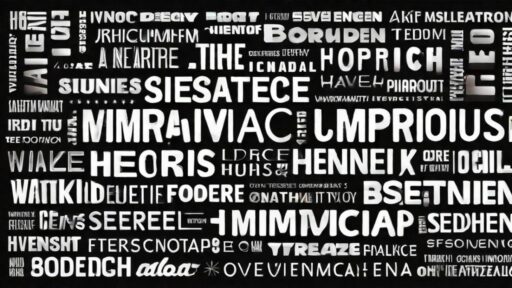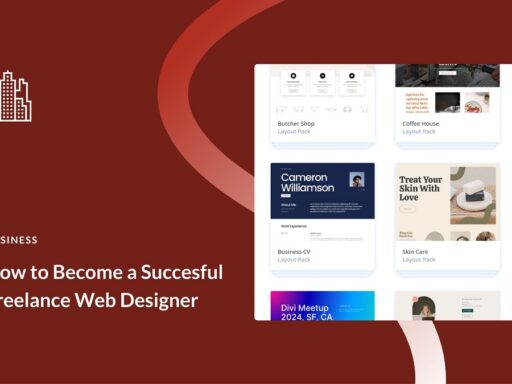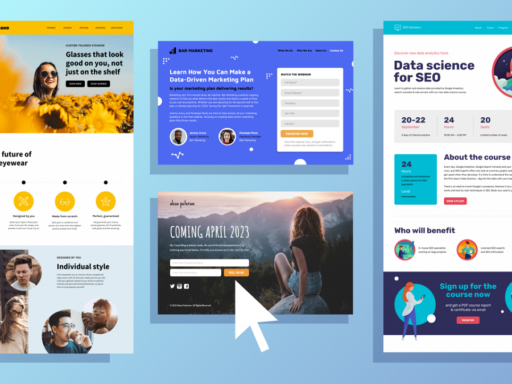Typography plays a pivotal role in modern graphic and web design, serving as a crucial element in how information is communicated and perceived. Its influence extends beyond mere aesthetics, shaping user experience, branding, and readability. In the digital age, where visual communication is paramount, understanding typography’s role is essential for creating effective and engaging designs.
Typography: Beyond Fonts and Styles
Typography encompasses more than just selecting fonts. It involves the art and technique of arranging type to make written language legible, readable, and visually appealing. This includes considerations such as font choice, size, line spacing, letter spacing, and alignment. Each typographic decision impacts how content is consumed and interpreted.
Enhancing Readability and Usability
In both graphic and web design, readability is crucial. Typography affects how easily users can read and understand text, which is especially important for digital platforms where user engagement is key. For instance, choosing the right font size and line height ensures that text is easy to read on various screen sizes and resolutions. Sans-serif fonts, like Helvetica and Arial, are often preferred for web content because they are clean and legible on screens. Conversely, serif fonts, such as Times New Roman, may be used for print media where their traditional style enhances readability in longer texts.
Hierarchy and Structure
Typography helps establish a clear hierarchy and structure in design. By using different font sizes, weights, and styles, designers can guide users through content in a logical and intuitive way. For example, headlines are typically larger and bolder to grab attention, while body text is smaller and more subdued for easy reading. This hierarchical approach not only improves readability but also helps users quickly locate and understand the most important information.
Branding and Identity
Typography is a powerful tool for shaping brand identity. The choice of typeface can convey a brand’s personality and values. For instance, a luxury brand might use elegant serif fonts to evoke sophistication, while a tech startup might opt for modern sans-serif fonts to reflect innovation and approachability. Consistent use of typography across various platforms reinforces brand recognition and ensures a cohesive visual identity.
Emotional Impact
Typography has the ability to evoke emotions and set the tone for a design. Different fonts can communicate different moods and attitudes. For example, playful and whimsical fonts might be used for children’s products, while more serious and formal fonts might be employed for legal or financial services. By carefully selecting and manipulating type, designers can align the emotional impact of their designs with the intended message and audience.
Responsive Design Considerations
With the proliferation of various devices and screen sizes, responsive typography has become increasingly important. In web design, typography must adapt to different screen resolutions and orientations. This involves using flexible font sizes, scalable units like ems and percentages, and media queries to ensure that text remains readable and visually appealing across devices. Techniques such as fluid typography, which adjusts font sizes based on viewport dimensions, are used to enhance the user experience on different devices.
Accessibility and Inclusivity
Accessibility is a critical aspect of modern design, and typography plays a key role in making content accessible to all users. This includes ensuring that text is legible for people with visual impairments and that it adheres to accessibility standards such as contrast ratios. Designers must consider factors like font size, line length, and spacing to accommodate users with varying needs and preferences. Tools and guidelines, such as the Web Content Accessibility Guidelines (WCAG), provide standards for creating accessible typography.
Visual Hierarchy and Emphasis
Effective typography helps create a visual hierarchy, making it easier for users to scan and digest information. By using typographic elements such as headings, subheadings, and bullet points, designers can break down complex content into manageable chunks. Emphasis can be achieved through font weight, style (bold, italic), and color, drawing attention to key information and improving overall content comprehension.
Integration with Other Design Elements
Typography does not exist in isolation but interacts with other design elements such as imagery, color, and layout. The harmonious integration of type with these elements creates a cohesive visual experience. For example, the choice of typography should complement the color palette and visual style of a design, ensuring that all components work together seamlessly. This integration enhances the overall effectiveness of the design and contributes to a more engaging user experience.
In modern graphic and web design, typography is much more than a decorative element; it is a fundamental aspect of communication and user experience. By carefully considering font choice, readability, hierarchy, branding, emotional impact, and accessibility, designers can create effective and visually appealing designs that engage users and convey messages clearly. Typography’s role in shaping the visual and functional aspects of design underscores its importance in the digital age, where every typographic decision can influence how content is perceived and interacted with





